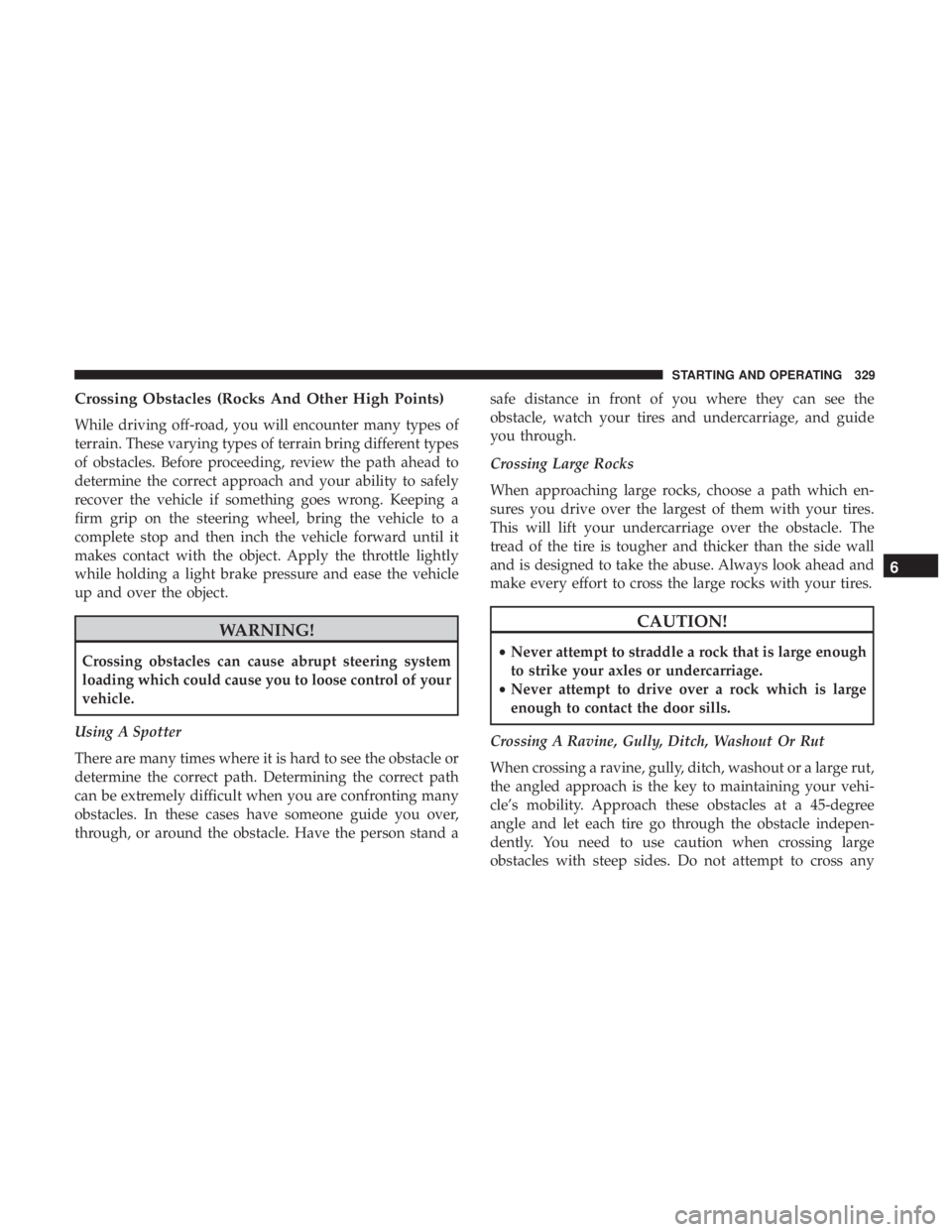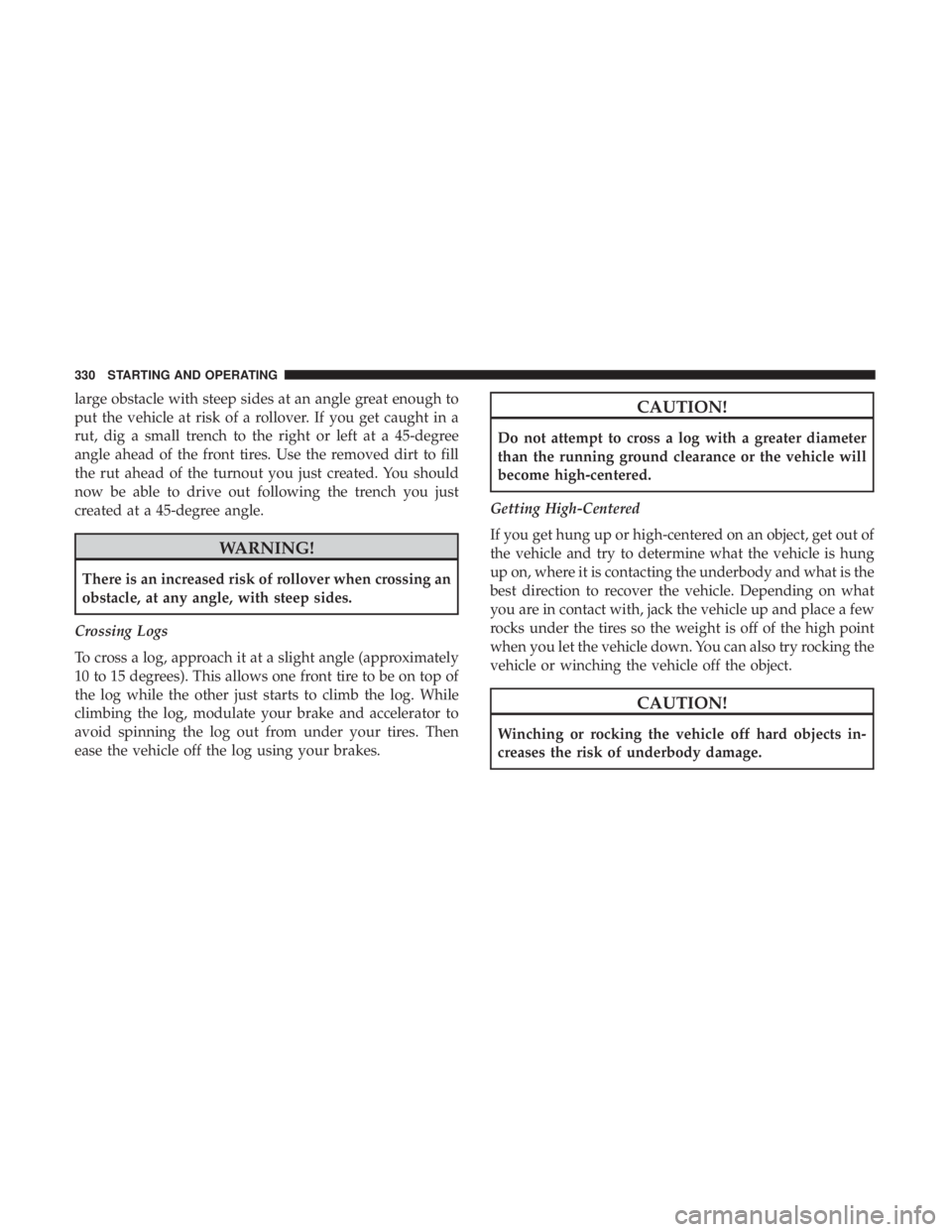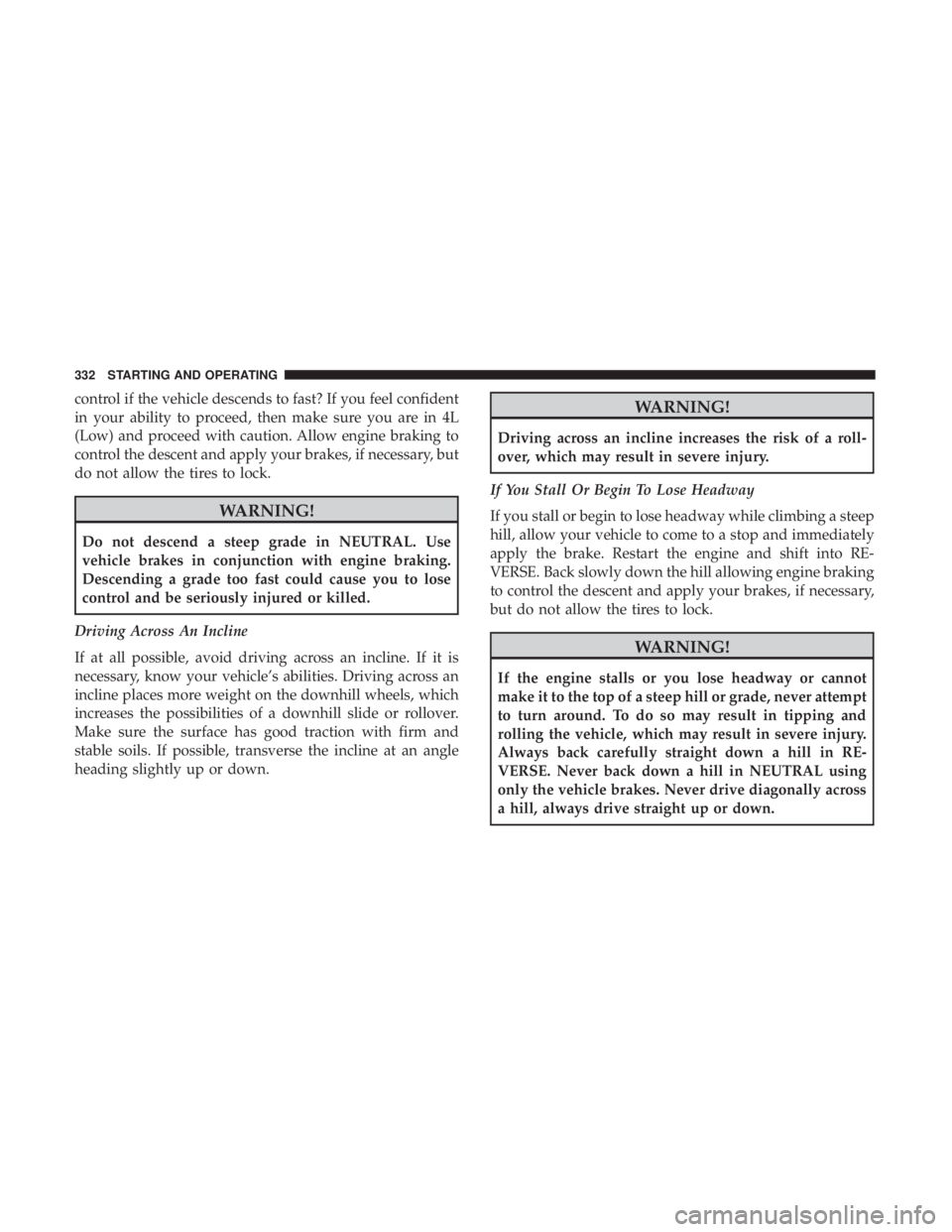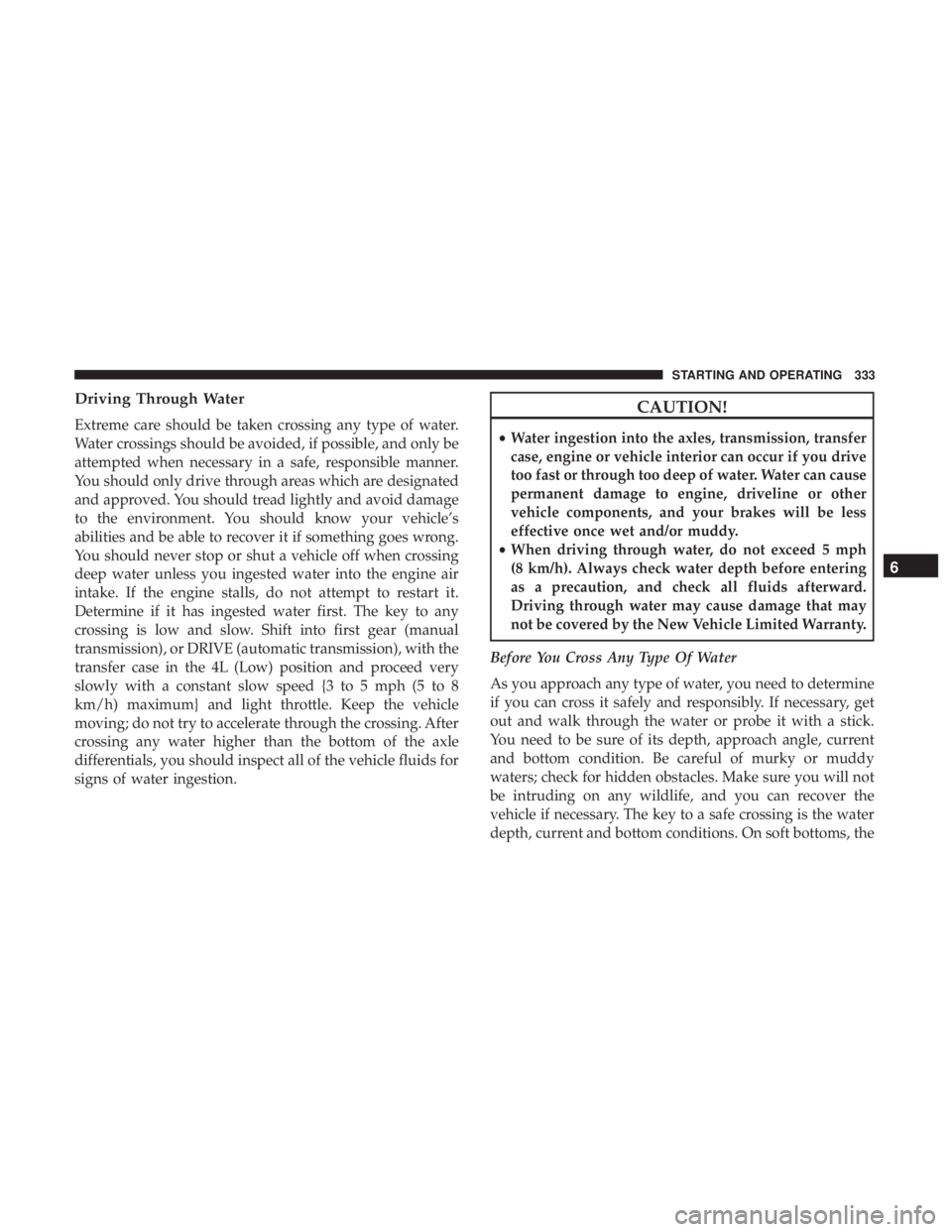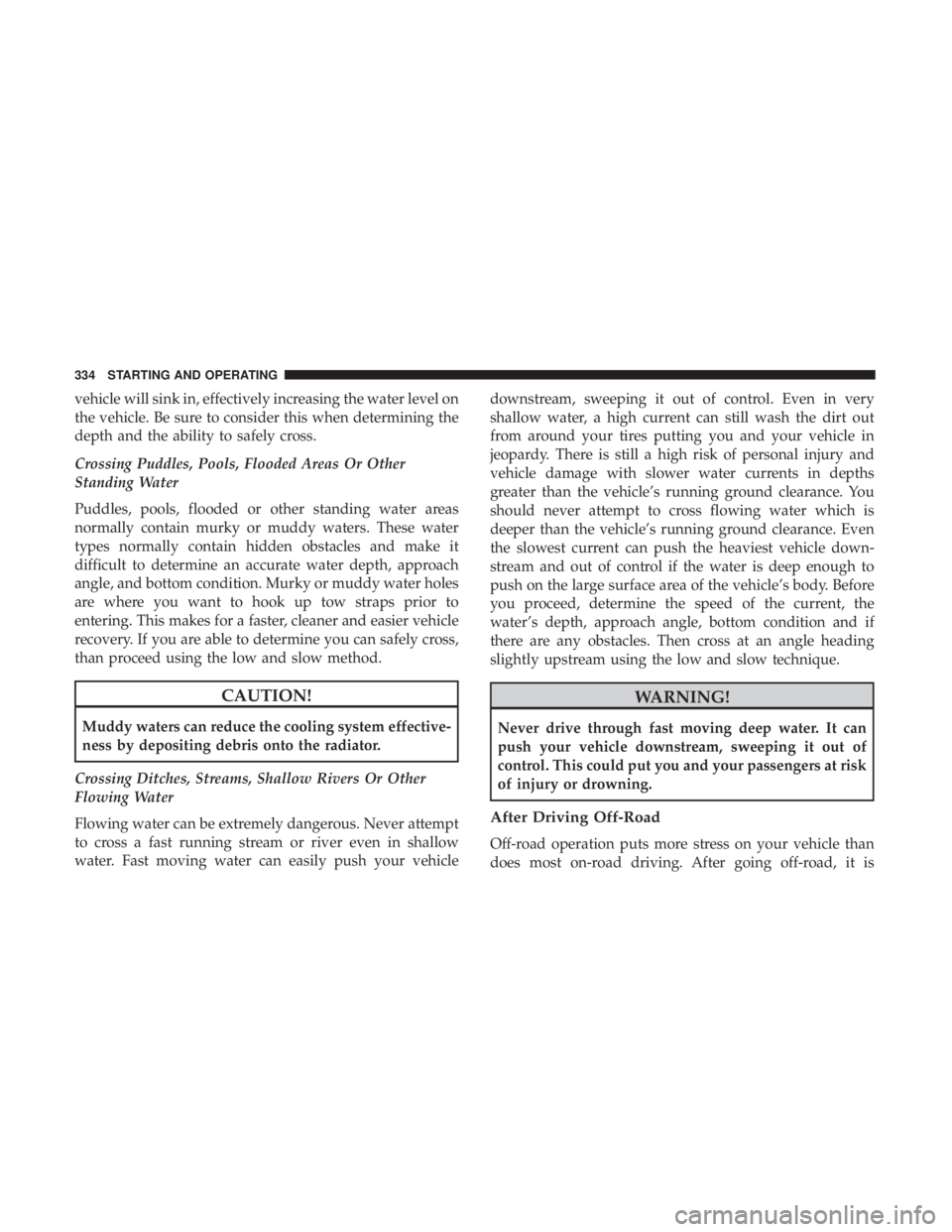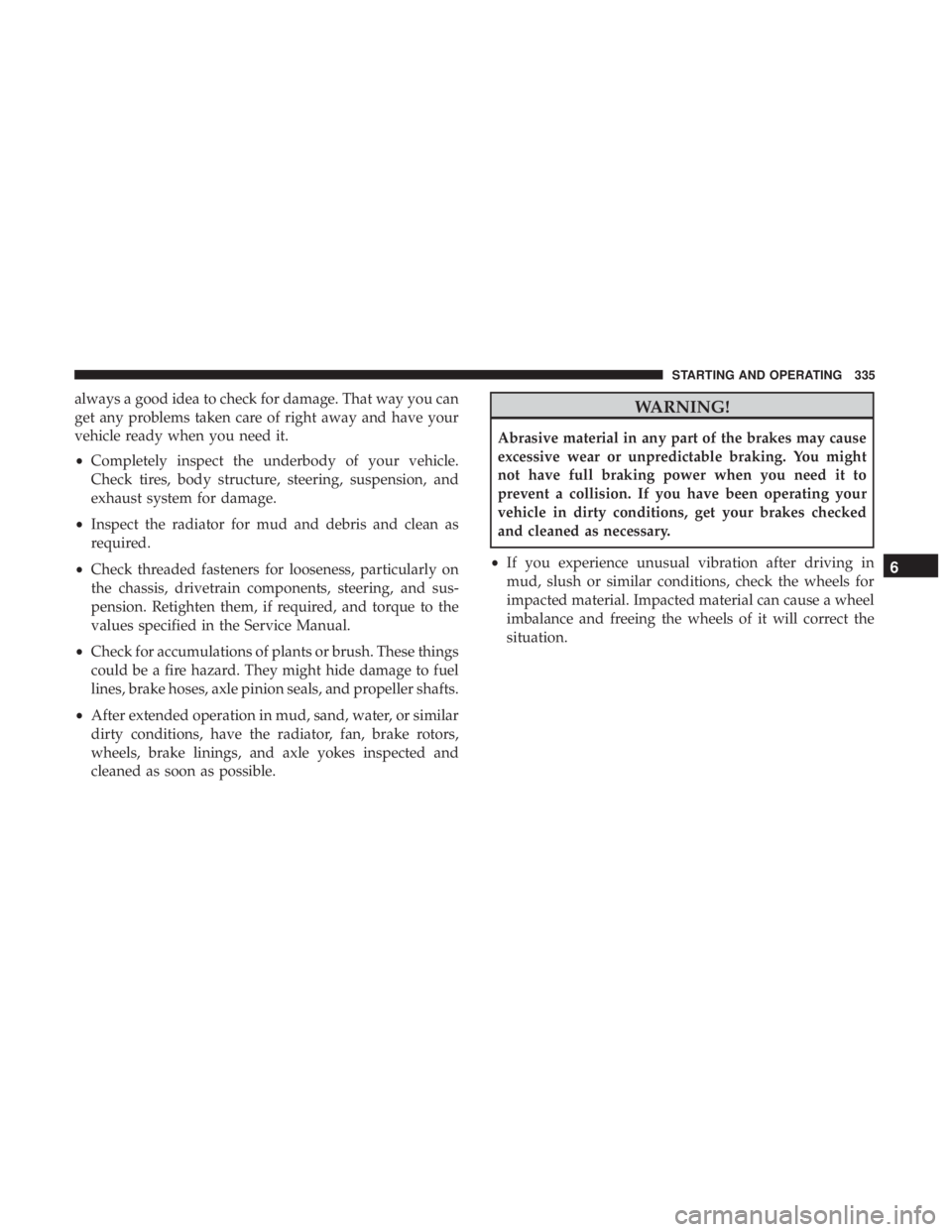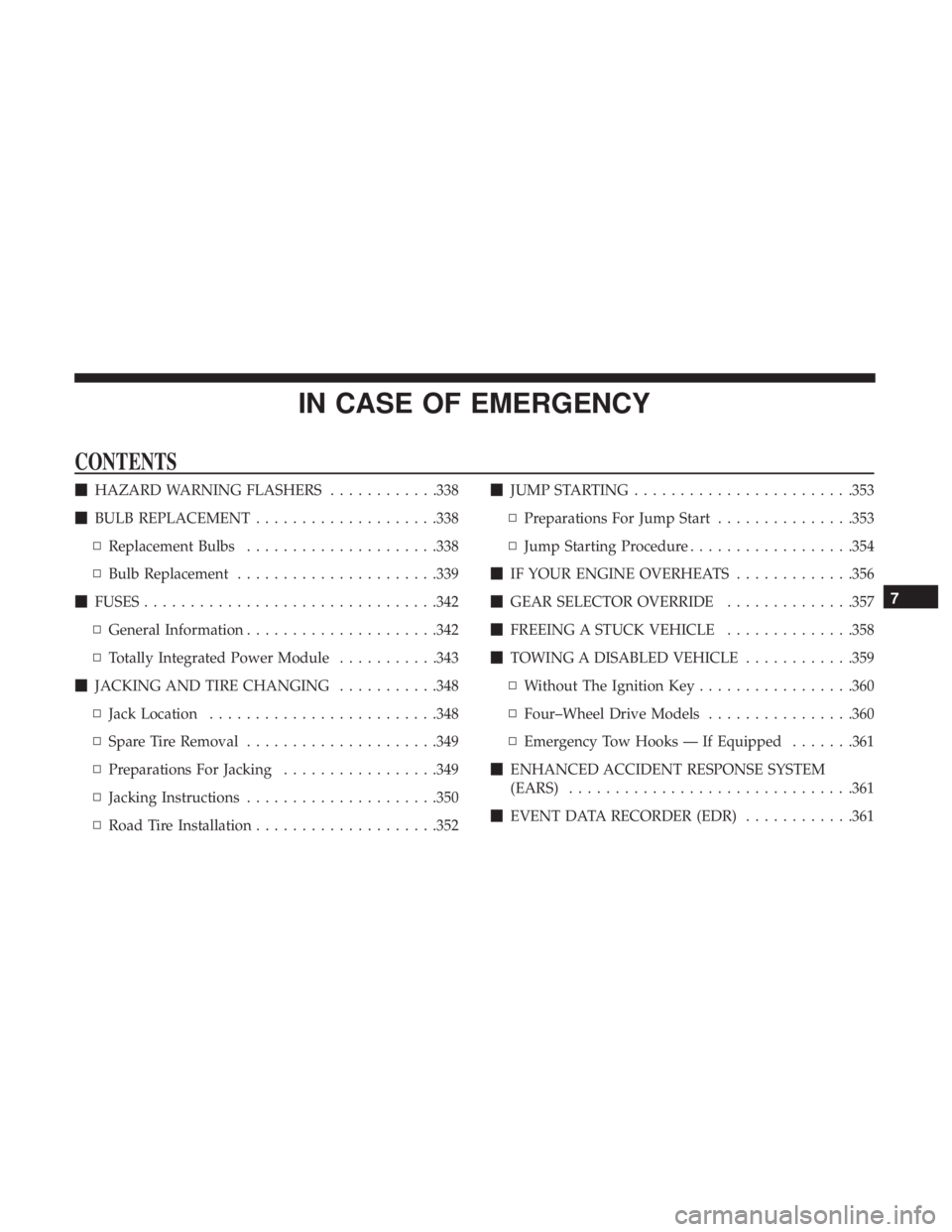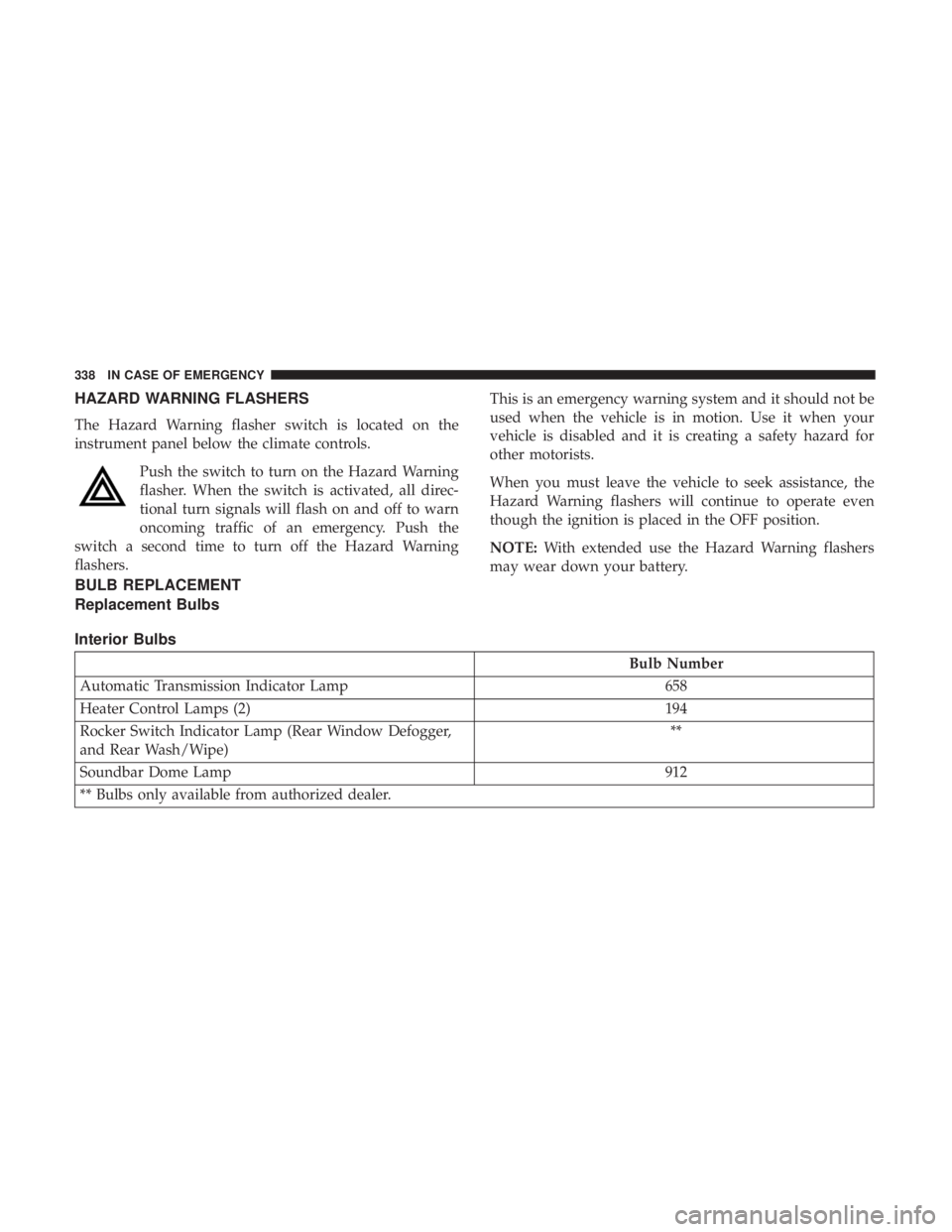JEEP WRANGLER UNLIMITED SPORT 2016 Owners Manual
WRANGLER UNLIMITED SPORT 2016
JEEP
JEEP
https://www.carmanualsonline.info/img/16/56078/w960_56078-0.png
JEEP WRANGLER UNLIMITED SPORT 2016 Owners Manual
Trending: engine oil, warning, spare tire location, center console, service indicator, brake, open hood
Page 331 of 518
Crossing Obstacles (Rocks And Other High Points)
While driving off-road, you will encounter many types of
terrain. These varying types of terrain bring different types
of obstacles. Before proceeding, review the path ahead to
determine the correct approach and your ability to safely
recover the vehicle if something goes wrong. Keeping a
firm grip on the steering wheel, bring the vehicle to a
complete stop and then inch the vehicle forward until it
makes contact with the object. Apply the throttle lightly
while holding a light brake pressure and ease the vehicle
up and over the object.
Page 332 of 518
large obstacle with steep sides at an angle great enough to
put the vehicle at risk of a rollover. If you get caught in a
rut, dig a small trench to the right or left at a 45-degree
angle ahead of the front tires. Use the removed dirt to fill
the rut ahead of the turnout you just created. You should
now be able to drive out following the trench you just
created at a 45-degree angle.
Page 333 of 518
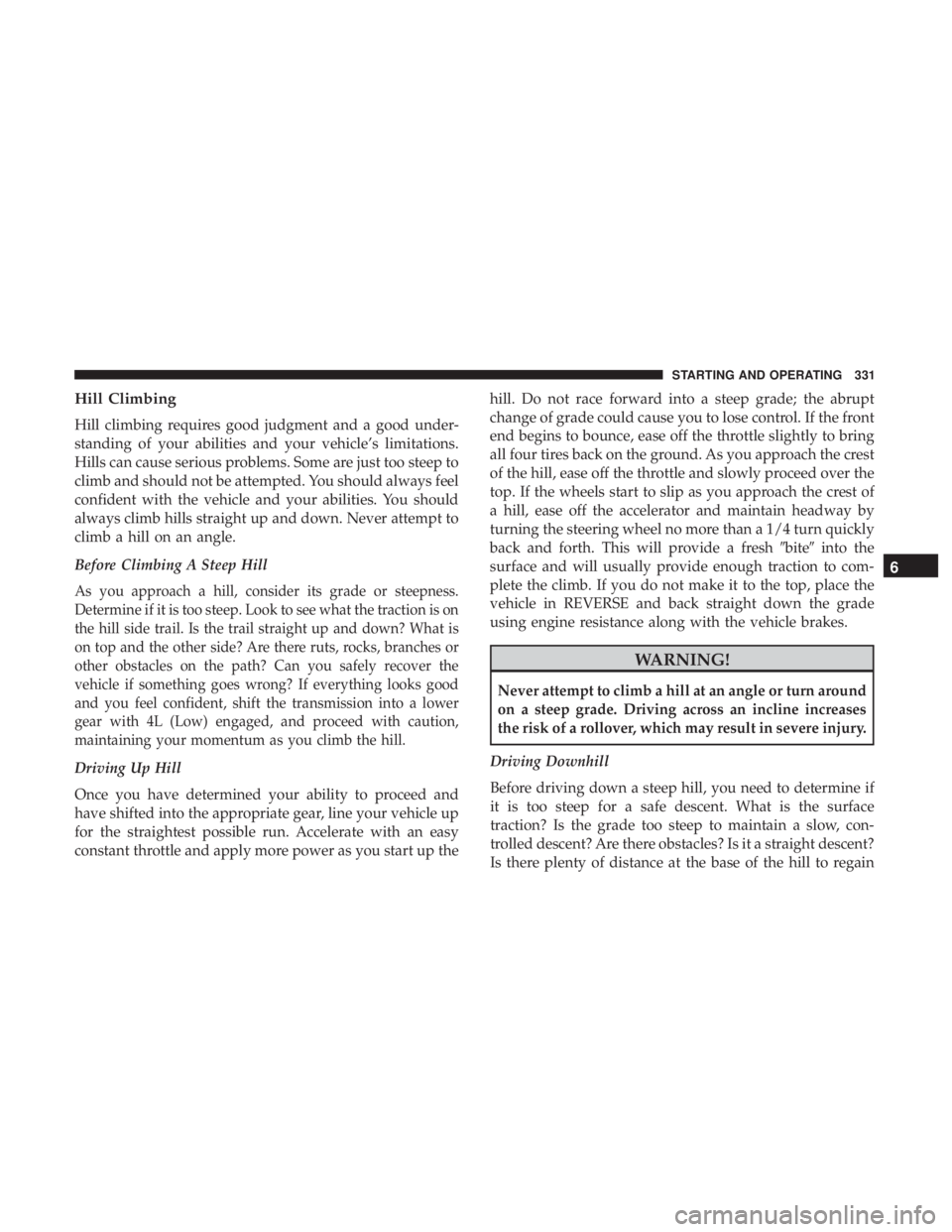
Hill Climbing
Hill climbing requires good judgment and a good under-
standing of your abilities and your vehicle’s limitations.
Hills can cause serious problems. Some are just too steep to
climb and should not be attempted. You should always feel
confident with the vehicle and your abilities. You should
always climb hills straight up and down. Never attempt to
climb a hill on an angle.
Before Climbing A Steep Hill
As you approach a hill, consider its grade or steepness.
Determine if it is too steep. Look to see what the traction is on
the hill side trail. Is the trail straight up and down? What is
on top and the other side? Are there ruts, rocks, branches or
other obstacles on the path? Can you safely recover the
vehicle if something goes wrong? If everything looks good
and you feel confident, shift the transmission into a lower
gear with 4L (Low) engaged, and proceed with caution,
maintaining your momentum as you climb the hill.
Driving Up Hill
Once you have determined your ability to proceed and
have shifted into the appropriate gear, line your vehicle up
for the straightest possible run. Accelerate with an easy
constant throttle and apply more power as you start up thehill. Do not race forward into a steep grade; the abrupt
change of grade could cause you to lose control. If the front
end begins to bounce, ease off the throttle slightly to bring
all four tires back on the ground. As you approach the crest
of the hill, ease off the throttle and slowly proceed over the
top. If the wheels start to slip as you approach the crest of
a hill, ease off the accelerator and maintain headway by
turning the steering wheel no more than a 1/4 turn quickly
back and forth. This will provide a fresh
�bite�into the
surface and will usually provide enough traction to com-
plete the climb. If you do not make it to the top, place the
vehicle in REVERSE and back straight down the grade
using engine resistance along with the vehicle brakes.
Page 334 of 518
control if the vehicle descends to fast? If you feel confident
in your ability to proceed, then make sure you are in 4L
(Low) and proceed with caution. Allow engine braking to
control the descent and apply your brakes, if necessary, but
do not allow the tires to lock.
Page 335 of 518
Page 336 of 518
vehicle will sink in, effectively increasing the water level on
the vehicle. Be sure to consider this when determining the
depth and the ability to safely cross.
Crossing Puddles, Pools, Flooded Areas Or Other
Standing Water
Puddles, pools, flooded or other standing water areas
normally contain murky or muddy waters. These water
types normally contain hidden obstacles and make it
difficult to determine an accurate water depth, approach
angle, and bottom condition. Murky or muddy water holes
are where you want to hook up tow straps prior to
entering. This makes for a faster, cleaner and easier vehicle
recovery. If you are able to determine you can safely cross,
than proceed using the low and slow method.
Page 337 of 518
always a good idea to check for damage. That way you can
get any problems taken care of right away and have your
vehicle ready when you need it.
•Completely inspect the underbody of your vehicle.
Check tires, body structure, steering, suspension, and
exhaust system for damage.
• Inspect the radiator for mud and debris and clean as
required.
• Check threaded fasteners for looseness, particularly on
the chassis, drivetrain components, steering, and sus-
pension. Retighten them, if required, and torque to the
values specified in the Service Manual.
• Check for accumulations of plants or brush. These things
could be a fire hazard. They might hide damage to fuel
lines, brake hoses, axle pinion seals, and propeller shafts.
• After extended operation in mud, sand, water, or similar
dirty conditions, have the radiator, fan, brake rotors,
wheels, brake linings, and axle yokes inspected and
cleaned as soon as possible.
Page 338 of 518
Page 339 of 518
Page 340 of 518
Trending: check oil, ground clearance, child restraint, manual transmission, heater, display, engine
